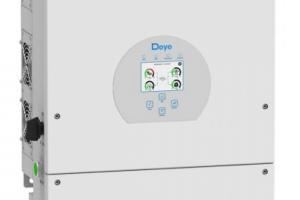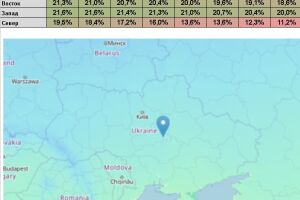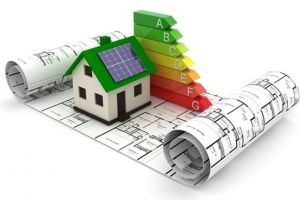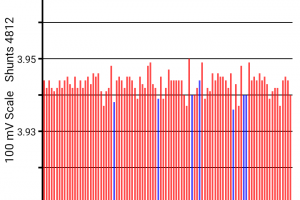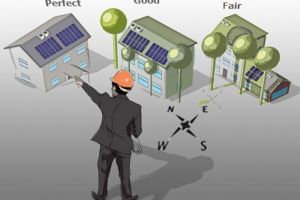INTRODUCTION
The purpose of this publication is to improve the reliability and safety of electrical installations by improving one of the basic (basic) technical regulations of the industry. Electrical installation rules (EEUs) determine the structure, principles of installation, specific requirements for individual systems, their elements, units and communications of electrical installations. The PSE sets the requirements for general purpose AC installations up to 750 kV and DC up to 1.5 kV. The new version of PUE takes into account the requirements of national standards, building codes, industry regulations and other documents related to the subject of PUE regulation. The provisions of the PUE are applied in the design of new construction, reconstruction, technical re-equipment or major overhaul of electrical installations.
The EWS consists of separate sections, divided into chapters, which regulate specific issues of electrical installation.
The history of creation, improvement and reissue of PUE dates back over 100 years. Thus, under the auspices of the Imperial Russian Technical Society, in 1907, an edition of "Rules and Regulations for Electrotechnical Devices of High Current" was published, in the preface to which: "This compilation is a complete translation of the Rules of the Union of German Electrical Engineers, published before 1907."
All subsequent editions of the PUE were prepared very carefully by specialized organizations, commissions and individual experts. The high quality of preparation, for example, of the sixth edition of PUE (M .: Energoatomizdat, 1986, 648 pp.), Is evidenced by the fact that this publication has not been revised for almost 20 years and during this time has not lost popularity among engineers and officials. This edition is the basis for the gradual (phased) revision organized by the Ministry of Energy of Ukraine in 2004 and completed in 2016.
The complex of works on the revision of the PUE in the first stages was carried out by the Ukrsillenergoproekt Institute together with its co-contractors in accordance with the agreements with the Energy Enterprises Association “Industry Reserve and Investment Fund for Energy Development (GIFRE”) and the Ministry of Energy of Ukraine.
The final stage of the revision (2014-2016) was carried out by the Separate Unit of the State Enterprise "National Energy Company" Ukrenergo "- Scientific and Design Center for the Development of the United Energy System of Ukraine.
About 50 organizations and educational institutions of Ukraine were involved in the review of the PUE: specialized institutes "Ukrenergomerezhproekt", "Ukrproektstalrekonstruktsiya", "Kievpromelektroproekt", "High Voltage Research Institute", LvivORGRES, "Lightning", "Kievproekt" Institute of Ukraine - renewable energy, electrodynamics, Ukrainian; National Universities NUBiP, KPI, KPI, Lviv Polytechnic, Poltava Technical, Chernihiv Technological, DonNABA, Association Yuzhkabel, Tavrida Electric Ukraine, Watson Telecom, Aselenergo, Synaps, Selcom Electronics, Electrosphere; Derzhgirpromnadzor, OJSC GRIFRE, SE NPP Ukrenergo, All-Ukrainian Energy Committee, Ukreneroconsulting, NJSC EKU, NNEGC Energoatom, Kharkivoblenergo, Substation 750 kV KyivskayaEnergy Center ", Kyiv Regional Scientific and Technical Union of Energy Workers," Fort Publishing House. The texts of all revised chapters are harmonized with the standards of the International Electrotechnical Commission, adapted to the climatic conditions of Ukraine, supplemented by the achievements of scientific and technological progress, the requirements for obsolete equipment are removed, legal and legal provisions are also removed, the chapters concerning special electrical installations are removed.
In the course of the revision of the PUE, new chapters were published for broad discussion by the engineering community, with almost a thousand comments and suggestions received. All revised chapters have been approved by the Ministry of Regional Development of Ukraine and approved in due course.
The next revision of the PUE is expected after 2020.
Comments and suggestions for improvement of the PUE should be sent to the Department of Electric Power Complex of the Ministry of Energy and Coal of Ukraine.
SECTION 1
GENERAL RULES
Chapter 1.1 The General Part
FIELD OF APPLICATION
1.1.1 The Electrical Installation Rules (hereinafter - the Rules) set requirements for general-purpose AC installations up to 750 kV and DC up to 1.5 kV.
These Rules are required to apply to the design of new construction, renovation, refurbishment or overhaul of electrical installations.
The new provisions of the Rules are not mandatory for use in existing electrical installations, arranged by the Rules in force at the time of creating electrical installations. The requirements of these Rules apply to special electrical installations, unless otherwise stipulated by regulatory documents governing the installation of special electrical installations.
electrical installations.
Regulations referenced in the text of the Rules should be applied in the version in force at the time of application of the Rules.
1.1.2 These Rules have been developed taking into account the obligation to carry out routine preventive and preventive tests and repairs of electrical equipment in the conditions of operation in accordance with the requirements of the instructions of the equipment manufacturers and the current normative documents for the operation of the electrical installations, as well as the obligation of systematic training and testing of production knowledge ( electrical) personnel in the scope of the requirements of the GCD 34.20.507-2003 "Technical operation of power plants and networks. Rules ", Rules for the technical operation of consumer electrical installations and NAPOP 40.1-1.01-97" Rules for safe operation of electrical installations ".
DEFINITIONS AND DEFINITIONS
These Rules use the terms set out in the Law of Ukraine "On Electricity": the object of electricity, the subject of electricity, especially important object of electricity, connection of electrical installation, development of electrical networks, regulatory document; in DSTU 2267-93 «Electrotechnical products. Terms and definitions »: electrical device, nominal value of the parameter of the electrical product (device); in GOST 3465 - 96 «General-purpose power supply systems. Terms and definitions »: general-purpose power supply system; in DBN A.2.2-3-2012 "Composition and content of design documentation for construction": new construction, reconstruction, major repairs, technical re-equipment; in GCD 34.20.507-2003 "Technical Operation of Power Plants and Networks. Rules »: production personnel, non-production personnel, operational personnel, duty personnel; in the Rules for the Technical Operation of Consumer Electrical Installations: Electrotechnical Personnel. Below are the terms used in this chapter and their definitions:
1.1.3 electrical installation
A complex of interconnected machines, apparatus, lines and ancillary equipment (together with the buildings and premises in which they are installed) intended for the production, transformation, transmission, distribution and transformation of electricity into another form of energy. Electrical installations under the conditions of electrical safety are divided into electrical installations up to 1 kV and electrical installations over 1 kV (according to the current value of voltage)
1.1.4 open or external electrical installation
Electrical installation not protected by the building from weathering. Electrical installations protected only by canopies, mesh fences, etc. are regarded as external
indoor or indoor electrical installation
Electrical installation, located inside the building, which protects it from the weather
1.1.5 electrical premises
Room or fenced off, such as nets, the part of the room where the electrical equipment is located, accessible only to production (electrical) personnel
1.1.6 dry room
A room where the relative humidity of the air does not exceed 60%. In the absence of such conditions in the premises specified in 1.1.10-1.1.12, it is called normal
1.1.7 Wet room
A room in which the relative humidity is more than 60% but does not exceed
75%
1.1.8 raw room
A room where the relative humidity exceeds 75% for a long time
1.1.9 a particularly damp room
A room where the relative humidity is close to 100% (ceiling, walls,
floor and indoor objects covered with moisture)
1.1.10 hot room
A room where, under the influence of different heat radiation, the temperature exceeds continuously or periodically (more than 1 day) + 35 ° C (for example, rooms with dryers, kilns, kilns, etc.)
1.1.11 dusty premises
A room in which process dust is released under conditions of production in such a quantity that it can settle on wires, penetrate inside machines, apparatus, etc.
Dusty rooms are divided into rooms with conductive dust and rooms with non-conductive dust
1.1.12 premises with a reactive or organic environment
A room in which aggressive vapors, gases, liquids, persistently or for a long time are present, deposits or mold are formed, which destroy the insulation and conductive parts of the electrical equipment.
1.1.13 With respect to the risk of electric shock, distinguish:
a) premises without high risk, in which there are no conditions that create increased or special danger (see subparagraphs b), c);
b) premises with high risk, characterized by the presence in them of one of the conditions that creates a high risk:
1) humidity or conductive dust (see 1.1.8 and 1.1.11);
2) conductive floor (metal, earth, reinforced concrete, brick, etc.);
3) high temperature (see 1.1.10);
4) the possibility of simultaneous human contact to the metal structures of buildings, technological apparatus, mechanisms, etc., which have a connection to the earth on the one hand, and to metal enclosures of electrical equipment on the other;
c) especially dangerous premises, characterized by the presence of one of the conditions, which creates a special danger:
1) special humidity (see 1.1.9);
2) a reactive or organic medium (see 1.1.12);
3) two or more high risk conditions at the same time (see subparagraph b);
d) territories where external electrical installations are located, which, by the level of risk of electric shock, equate to particularly dangerous premises
1.1.14 AC voltage
The current value of the AC voltage
1.1.15 DC voltage
Voltage from direct current sources or rectified voltage with ripples not more than 10% of the active value
1.1.16 Words are used to indicate the obligation to comply with the requirements of the Rules
"Must", "must", "allowed", "forbidden", "necessary", "should" and their derivatives. The words "usually", "preferably", "as a rule" mean that this requirement prevails and that its deviation must be justified. The word "allowed" means that this decision is used as an exception, as forced (due to constrained conditions, limited resources of necessary equipment, materials, etc.). The word "recommended" means that this solution is one of the best, but not required.
1.1.17 The normalized values of the values with the indication "not less" are the smallest, and with the indication "no more" the greatest. When choosing rational values, the operating and installation experience, the electrical safety and fire safety requirements must be taken into account.
1.1.18 All values of the values given in these Rules with prefixes "from" and "to",
should be understood as "inclusive".
GENERAL REQUIREMENTS
1.1.19 Electrical equipment and materials used in electrical installations shall comply with the requirements of DSTU, DBN and other relevant applicable regulatory documents or specifications approved in the prescribed manner. Documents of conformity in accordance with the legislation in force in Ukraine must be drawn up for products of foreign production.
1.1.20 The design, construction, method of installation, laying and insulation class of machinery, apparatus, appliances and other electrical equipment used, as well as of cables and wires, shall comply with the design parameters of the electrical installation, its modes of operation, the environmental conditions and the requirements of the relevant chapters of these Rules.
1.1.21 Electrical installations and associated structures shall be resistant to, or protected from, environmental influences.
1.1.22 The construction and sanitary-engineering part of electrical installations (construction of buildings and elements of engineering infrastructure) must be carried out in accordance with the design documentation approved in accordance with the established procedure, with the obligatory fulfillment of the additional requirements specified in these Rules.
1.1.23 Electrical installations shall satisfy the requirements of the relevant environmental regulations for the permissible levels of noise, vibration, electric and magnetic fields, electromagnetic compatibility, chemical waste, oil, debris and the like.
1.1.24 In order to protect telecommunication, railway signaling and telemechanics equipment from dangerous and interfering effects of electrical installations (transmission lines, etc.), measures shall be taken in accordance with the requirements of the applicable regulations.
1.1.25 In electrical installations, provision should be made for the collection and disposal of waste chemicals, oils, debris, industrial water, etc., which are formed during the operation of electrical installations. In accordance with the requirements of the current regulatory documents on environmental protection, it should be impossible to reach the specified waste in reservoirs, stormwater drainage system, gullies, as well as in the territory not intended for accumulation of this waste.
1.1.26 The design and selection of circuits, arrangements and designs of electrical installations should be performed on the basis of comparisons of applications of reliable circuits, introduction of the latest equipment, taking into account the requirements of safety, energy and resource efficiency, experience.
1.1.27 In the event of electrocution or soil corrosion, appropriate measures should be taken to protect structures, equipment, pipelines and other underground communications.
1.1.28 In electrical installations, it must be possible to easily identify the parts that belong to their individual elements (simplicity and clarity of circuits, proper location of electrical equipment, inscriptions, markings, coloring).
1.1.29 Protective conductors in all electrical installations must have the letter PE or the color marking of longitudinal or transverse strips of the same width (for tires - from 15 mm to 100 mm) of yellow and green.
The neutral conductor (1.7.28) is denoted by the letter N and blue. The combined protective (PE) and neutral (N) conductors in electrical installations up to 1 kV with deaf-grounded neutral are marked with the letters РЕН (1.7.25) and blue throughout, along the ends with yellow-green stripes.
1.1.30 The alphanumeric and color codes of the same name tires for each electrical installation must be the same.
Tires should be marked:
- for three-phase alternating current with a voltage higher than 1 kV: buses of phase A - yellow, phase B - green, phase C - red;
- for AC three-phase current up to 1 kV: buses of phase L1 - yellow, phase L2 - green, phase L3 - red.
In operating electrical installations with voltage up to 1 kV the bus can be marked with letters A, B, C;
- single-phase buses, if they are a branch of the tires of the three-phase system,
- as the corresponding three-phase current bus;
- DC: positive bus (+) - red, negative (-) -
blue and the midpoint conductor M is blue.
The color marking must be carried out along the entire length of the tires, if it is also provided for more intensive cooling or for corrosion protection.
Color marking may not be carried out over the entire length of the tires: only color or only alphanumeric or color in combination with alphanumeric - only at the tire attachment points; if uninsulated tires are unavailable for inspection (for example, when energized), they should not be marked. However, the level of safety and clarity during the maintenance of the electrical installation should not be reduced.
1.1.31 Tires in distribution plants (except for factory-made distribution plants) shall be subject to the following conditions:
a) in closed switchgear with AC three-phase bus should be placed:
1) precast and bypass tires, as well as all types of section tires in the case of vertical position A – B – C - from top to bottom; in the case of a horizontal, inclined position or the "triangle" scheme, the bus A is the farthest, the bus B is in the middle; The bus closest to the service corridor is C;
2) a branch from the precast tires - from left to right A – B – C when looking at the tires from the service corridor (in the presence of three corridors - from the central one);
b) in open switchgear with AC three-phase bus should be placed:
1) precast and bypass tires, as well as all types of section buses, shunt jumpers and jumpers in circuits of circular, one and a half, etc. - in such a way that they have a phase A bus on the part of the main transformers at higher voltage;
2) branch bus assembly in open switchgear - so that the location of the connection buses from left to right is A – B – C when viewed from the side of the tires on the transformer.
The arrangement of the tire branches in the cells, regardless of their position relative to the precast tires, should be the same;
c) in five- and four-wire circuits of three-phase alternating current in electrical installations up to 1 kV the tire arrangement shall be as follows:
1) in the case of vertical placement:
- one below the other: top to bottom L1-L2-L3-N-PE (PEN);
2) in the case of horizontal placement:
- the bus L1 should be the farthest, then the L2-L3-N phases closest to the service corridor - PE (PEN);
- Tire branch, when looking at tires from the service corridor:
3) in the case of horizontal placement: from left to right L1-L2-L3-N-PE (REN);
4) in the case of vertical placement: L1-L2-L3-N-PE- (REN) from top to bottom; d) for direct current tires have:
1) precast tires in the case of vertical placement:
- upper M, middle (-), lower (+);
2) precast tires in the case of horizontal placement:
- the farthest M, the middle (-) and the nearest (+) when looking at the tires from the service corridor;
- Tire branch: left M, middle (-), right (+) when looking at tires from the service corridor.
In some cases, the requirements of subparagraphs (a) may be waived.
- d) if their implementation is associated with a significant complication of the electrical installations (for example, it requires the establishment of special supports near the substation for the transposition of overhead power lines) or if two or more transformations are applied to the substation.
1.1.32 In residential, public and similar premises, the devices used to enclose and close the conductive parts must be continuous; in industrial premises and electrical premises it is allowed to use solid, mesh or hole-like devices, which provide a degree of protection not less than 1X2 according to GOST 14254-96 (IEC 529-89) "Degrees of protection provided by shells".
Enclosures and closures must be designed so that they can only be removed or opened with the help of keys or tools.
1.1.33 All enclosures and closures must, according to local conditions, have sufficient mechanical strength. For voltages greater than 1 kV, the thickness of the metal enclosures and closures must be at least 1 mm.
1.1.34 Electrical installations must be provided with protective equipment as well as first aid in accordance with NSAID 40.1-1.07-01 "Rules for the operation of electrical protective equipment" and NAOP 1.1.10-5.05-86 (RD 34.03.702) "First Aid Instructions victims of accidents while servicing power equipment. "
1.1.35 The fire and explosion performance of electrical installations is conditioned by the fulfillment of the requirements set out in the relevant chapters of these Rules and NSAOP 40.1-1.32-01 “Rules for the construction of electrical installations. Special equipment electrical equipment ». When commissioning an electrical installation, it is necessary to provide firefighting equipment and equipment in accordance with the relevant provisions of regulations and normative documents.
Chapter 1.2 Power Supplies and Power Networks
FIELD OF APPLICATION
1.2.1 This chapter of the Regulation applies to all power supply systems.
Power supply systems for traction, underground and other special electrical installations, in addition to the requirements of this chapter, shall also comply with the requirements of the special rules.
DEFINITIONS
Below are the terms used in this chapter and their definitions:
1.2.2 energy system (power system)
A complex of power plants, connected to a common electrical network with electricity receivers, as well as to each other, in which the processes of production, transmission and consumption of electricity occur at the same time under the joint management of these processes. In some parts of the grid in the process of electricity production, it is possible to co-produce heat and its distribution and consumption at local units
1.2.3. The electrical part of the grid
A set of electrical installations of power stations and power grids
1.2.4. The electricity system
The electrical part of the power system and the electrical energy receivers from it, united by the common process of production, transmission, distribution and consumption of electricity
1.2.5 power supply
Electricity supply to the centralized power supply Electricity supply to consumers from the grid
1.2.6 electrical network
A set of electrical installations for the transmission and distribution of electrical energy, consisting of substations, distribution systems, power lines, overhead and cable transmission lines operating in a certain territory
1.2.7 electric energy receiver (electric receiver)
An apparatus, an assembly, a mechanism designed to convert electrical energy into another type of energy
1.2.8 the electricity consumer
An electric receiver or a group of electric process integrated processors located in a specific territory
1.2.9 Independent power supply
A power source that stores voltage within the limits prescribed by these Post-Emergency Regulations, in the event of its disappearance on another or other power sources.
Independent power sources include two sections or bus systems for one or two power plants and substations, subject to the following two conditions:
1) each of the sections or systems of the tire, in turn, is powered by an independent power source;
2) Tire sections (systems) that are not interconnected or have a link that automatically shuts off if one of the sections (systems) of the tire fails.
Independent power supplies also include uninterruptible power supplies, rechargeable batteries, and other sources of electricity that are capable of providing the required electricity to the receivers offline.
1.2.10 normal mode
Operating mode of electrical installation in normal conditions
emergency mode The mode of operation of the electrical installation in the conditions of single or numerical damage post-emergency mode
Operating mode of electrical installation with existing damage prior to normal restoration.
GENERAL REQUIREMENTS
1.2.11 The following issues should be considered when designing power supply systems and refurbishing power plants:
1) the prospect of the development of power systems and power supply systems, taking into account the rational combination of newly constructed electrical networks with existing and newly constructed networks of other voltage classes;
2) ensuring reliable integrated centralized electricity supply to all consumers located in the area of the electric grids;
3) limitation of short-circuit currents to the long-term limit levels;
4) reduction of losses of electric energy, energy saving;
5) compliance of the decisions made with the environmental safety conditions;
6) electromagnetic compatibility of the designed automated control systems, relay protection, dispatch technology and other technical means.
In this case, electricity supply should be considered in combination with the possibility and feasibility of technological redundancy.
When deciding on redundancy issues, account should be taken of the overload capacity of the electrical installation elements, as well as the availability of redundancy in the process equipment.
1.2.12 Repair, emergency and post-emergency modes should be taken into account when deciding on the development of power supply systems.
1.2.13 When selecting independent interconnecting power supplies that are the subject of a power system, the probability of simultaneous dependent short-term reduction or complete disappearance of the voltage during the time of relay protection and automatics in the event of damage to the electrical part of the power system, as well as of the simultaneous voltage, should be taken into account. on these power sources in the event of severe system crashes.
1.2.14 Requirements 1.2.11–1.2.13 should be taken into account at all intermediate stages of the development of energy and consumer power systems.
1.2.15. The design of the electrical networks shall be carried out taking into account the method of servicing them (constant duty, on-site crews, etc.).
1.2.16. The operation of electrical networks from 3 kV to 35 kV may be provided with either isolated neutral or neutral grounded through an arc reactor or resistor, and grounded simultaneously through an arc reactor and resistor.
Ground fault protection must operate reliably with the neutral grounding mode selected.
The compensation of the capacitive earth fault current through the arc reactors should be applied at the following values of this current in normal modes:
- in networks with voltage from 6 kV to 10 kV having reinforced concrete and metal supports on overhead transmission lines (overhead lines), - more than 10 A;
- in networks of 20 kV, having reinforced concrete and metal supports on the submarine, - more than 5 A;
- in all 35 kV networks - more than 10 A;
- in networks without concrete and metal supports on submarines: 6 kV -
more than 30 A; 10 kV - over 20 A; Voltage from 15 kV to 20 kV - more than 15 A.
In case of justification, it is allowed to apply compensation in the 6–35 kV networks also with capacitance current values less than the above.
In the case of equipment of electrical networks with voltage from 6 kV to 35 kV, devices of selective protection against single-phase earth fault, which act to switch off the damaged connection, capacitive current compensation is not required.
In order to ensure selective switching off of the damaged cable in the case of single-phase grounding in electric cable networks with voltage from 6 kV to 35 kV, neutral grounding through the resistor or the equipment of the arc reactor is allowed, with an additional winding for short-term connection of the resistor.
The operation of electrical networks with voltage from 110 kV to 150 kV can be envisaged with both effectively grounded neutral (1.7.4) and deaf-grounded neutral (1.7.5).
220 kV or higher electrical networks should only operate with deaf-grounded neutral.
CATEGORIES OF ELECTRIC POWER RECEIVERS AND ENSURING THE RELIABILITY OF ELECTRICITY
1.2.17 Electricity generators are divided into the following three categories:
Category I electric appliances are electric power interrupts that can cause interruption: danger to human life, significant material damage to electricity consumers (damage to expensive basic equipment, mass shortage of products), disruption of a complex technological process, impaired functioning of particularly important elements of the utility.
In the category I electric motors there is a special group of electric motors, the uninterrupted operation of which is necessary for an uninterrupted stop of production in order to prevent the threat of human life, explosions, fires and damage to high-value basic equipment, loss of important information.
Category II electric receivers - power cutters whose power outage leads to mass production outages, mass downtime for workers, machinery and industrial transport, disruption of the normal activities of a large number of urban and rural residents.
Category III electric receivers are the rest of the electric receivers that do not fall under the definition of categories I and II.
The reliability categories of power supply are determined depending on the technology of the main production of the consumer of electricity according to the requirements of DBN B.2.5-23: 2010 “Designing of electrical equipment of civil objects”.
Finally, the reliability categories are agreed by the customer of the project of electricity supply to the consumer from external sources of electricity.
1.2.18 Category I electric power generators shall be provided with electricity from two independent interconnecting power sources and interruption of their power supply in the event of a power failure from one of the power sources shall be allowed only for the time of automatic power-up.
Switching of the power supply should be carried out in the shortest possible time and if possible do not change the mode of operation of the consumer equipment.
For the supply of a special group of electric receivers of the first category, additional power from the third independent interconnecting power supply should be provided.
As a third independent power source for a specific group of electric receivers and as a second independent power source for the rest of the first category electric receivers, local power plants, power plants of the power systems (in particular, generator voltage buses), special uninterruptible power units, rechargeable batteries, etc. can be used. If the redundancy of the power supply cannot provide the necessary continuity of the technological process, or if the redundancy of the power supply is economically impractical, then the technological redundancy is ensured, for example, by installing inter-redundant technological units, special devices of an emergency stop of the technological process, which operate in case of power failure.
Supply of electric receivers of the first category with a particularly complex continuous technological process, which requires a long time for restoration of the operating mode, in the presence of technical and economic justification, it is recommended to carry out from two independent interconnecting power sources, to which additional requirements are determined, which are determined by the peculiarities of the technological process.
1.2.19 Category II electric motors shall be provided with electricity from two independent interconnecting power supplies.
For category II electric power generators, in the event of a power failure from one of the power sources, the interruption of the power supply is acceptable for the time required to enable backup power by the actions of regular personnel or the visiting operational crew.
1.2.20 For Category III electric appliances, power may be supplied from one power source, provided that the interruption of power supply required to repair or replace a damaged element of the power system does not exceed one day.
LEVELS AND VOLTAGE ADJUSTMENT, REACTIVE POWER COMPENSATION
1.2.21 For electric networks, technical measures should be envisaged to ensure the quality of electricity voltage in accordance with the requirements of GOST 13109-97 "Electricity. The compatibility of the electromagnetic means. Electricity quality standards in general purpose power supply systems. "
1.2.22. The voltage regulating devices shall ensure that the voltage on the buses of 6 to 20 kV power plants and substations to which the distribution networks are connected is maintained, within not less than 105% of the rated load during the peak load and not higher than 100% of the rated voltage. the period of least load on these networks.
1.2.23 The selection and placement of reactive power compensation devices in electrical networks shall be in accordance with the relevant regulations for reactive power compensation.



